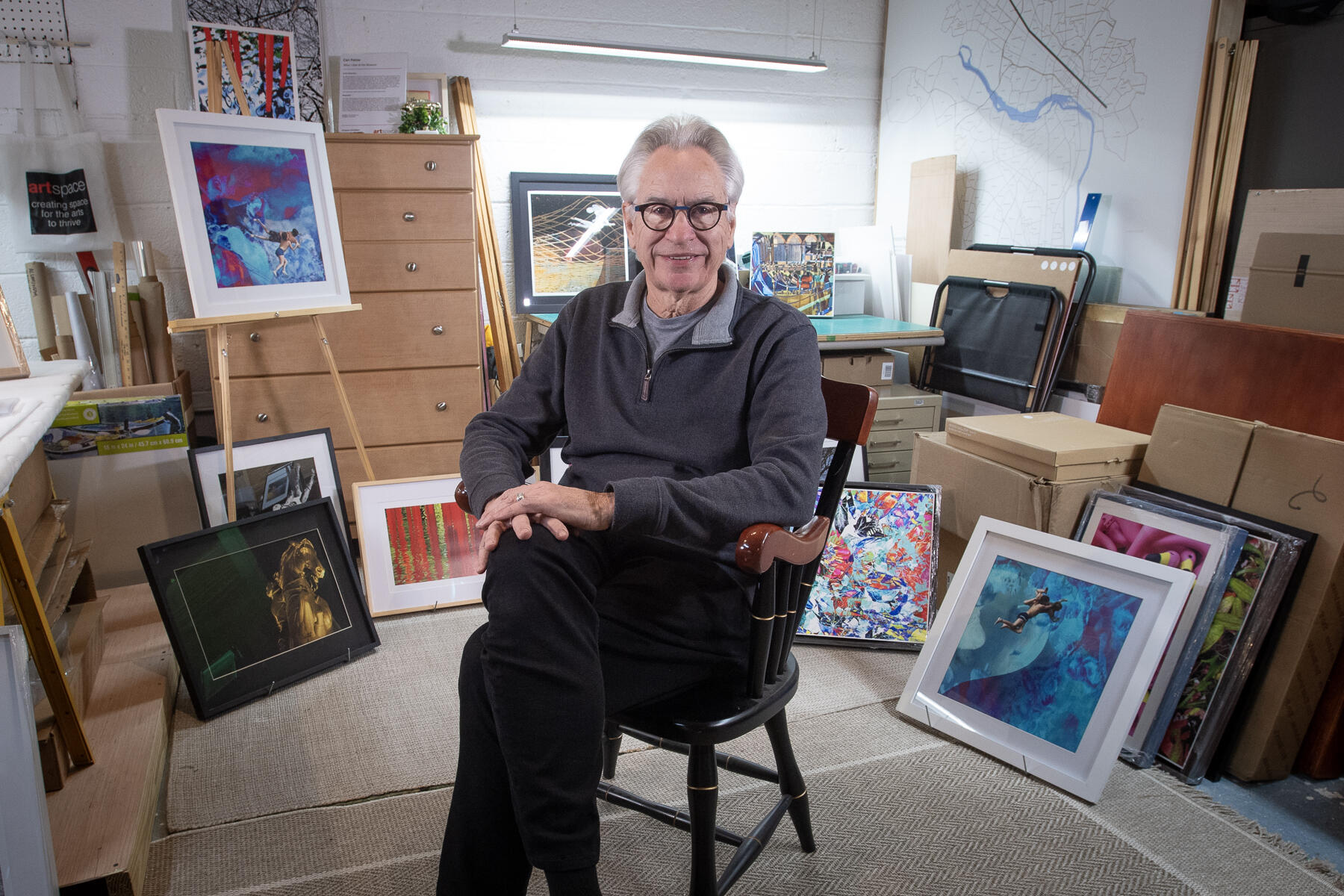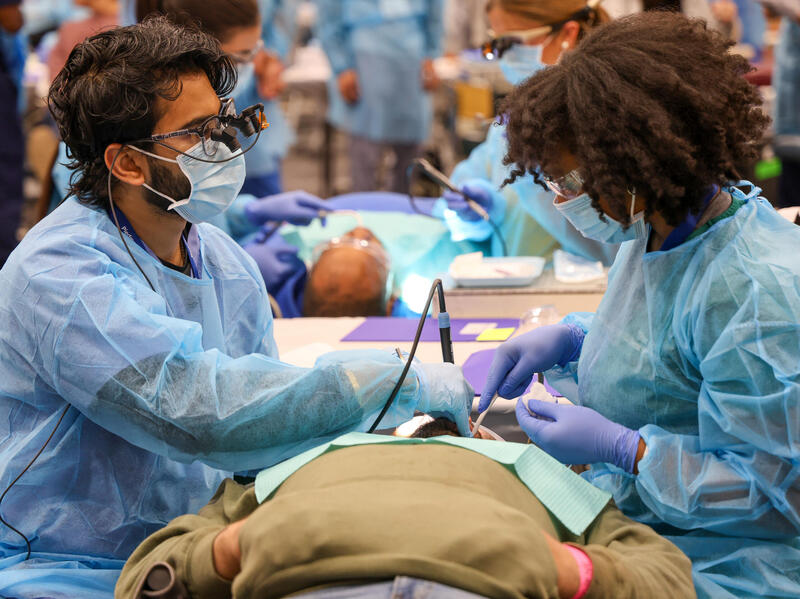
Dec. 17, 2024
From A (arts) to Z (zoology), VCU alum Carl Patow is a true renaissance man
Share this story
For Carl Patow, three advanced degrees just wasn’t enough.
“My mother always said, never be afraid to invest in yourself,” said the surgeon-turned-artist, 71. “So, my philosophy would be not to wait around, but to say, ‘Look, in order to make this next part of my career work, I need to put some effort into it.’”
Patow has never lacked for effort. Decades before his studies at Virginia Commonwealth University, his educational journey began with an undergraduate degree in zoology from Duke University in 1975. From there, he studied at the University of Rochester, where he earned his medical degree in 1979 and embarked on his first career as an Army surgeon.
Upon leaving the military, Patow earned his master’s in public health in 1996 from Johns Hopkins University, followed by his MBA in 2007 from the University of St. Thomas in Minneapolis. While using his medical background to serve diverse populations in that city, Patow found that some communities lacked access to proper health care – which unexpectedly introduced the arts to his journey.
“I set up a yearlong opportunity to work with African American, Somali, Hmong and Latino populations,” he said, teaching them about health care. In turn, he and his team developed strategies to promote access. This work culminated in “The EBAN Experience,” where Patow worked with a local theater to create screenplays that participants acted in as themselves. The project fostered an artistic dialogue around health and community.
“So that’s where the art part starts to leak in,” Patow said. “It’s medicine, but it’s also an artistic opportunity to learn about people and how to improve their health.”
That experience is what planted the seed to study art. “Careers can morph in many different directions,” he said.

So, after retiring to Richmond, Patow – who said he did not plan to earn another degree – learned about the kinetic imaging program in VCU’s School of the Arts. Taking a few courses set the stage for his MFA degree, which he earned in 2019 – and which has propelled his later-in-life career as an artist.
Patow’s graduate thesis involved more than 300 conversations about community issues in Richmond. The project, titled “Works When,” culminated in a sculpture that mapped the sentiments of Richmond residents.
“I think, as an artist, one always has an obligation to the community,” Patow said. “In my case, I like to have a positive approach and really think about how we can make the community a better place for people.”
Community is at the center of Patow’s creations. In 2018, alongside a group of fellow artists and the 1708 Gallery in Richmond, he helped create an interactive exhibition at the Virginia Museum of Fine Arts. As part of 1708’s annual InLight series, where art is showcased in the dark, thousands of Richmonders shared their wishes for the city by placing them in illuminated cups that flowed into a reflection pool. In 2020, he again participated in InLight, this time with illuminated maps highlighting the historic practice of discriminatory redlining in Richmond neighborhoods.
Patow’s art doesn’t just cater to adults. He created a project with plastic yard flamingos that taught teenagers at a local library about sea-level rise. Taking the core ideas from that endeavor, he designed an interactive performance at the Science Museum of Virginia to teach elementary school ages.
His most recent exhibited work featured 13 panels about young adults who face challenges navigating a mystical world and eventually make their escape.

“They gain knowledge, they celebrate. It’s sort of a hero’s journey. And it asks the question, ‘Do we have the courage?’ Which this year is a big question,” Patow said.
His latest endeavor is an alternative artists residency.
The After School at the Boston-based Center for Arts, Design and Social Research is a yearlong program emphasizes collaborative dialogue among artists from diverse backgrounds in an unstructured educational environment. Thirty artists from around the world come together – online and with two in-person visits to Turkey and Kenya -- to create a forum of ideas that inspire one another and their artistic journeys.
“It’s so different from anything else that I’ve seen out there,” Patow said, contrasting it with traditional residencies that focus on solitary work.
Patow and his wife, Sue, recently became members of the Pollak Society at VCUarts, which brings together VCU alumni and friends of the university to support the school’s programs and mission.
“Not only does [the Pollak Society] provide funding, but it has a dual function,” Patow said. “It creates a community of people who are interested in the arts and who want to see the arts thrive. I think that’s really important that this society exists for that function.”
Looking ahead, Patow hopes to explore issues of masculinity and societal pressures on men.
While traveling, he has been documenting toy stores through photographs. The images capture the stark difference between toys marketed toward girls versus boys, as well as how gender norms shape identity from a young age. Patow plans to conduct focus groups with men of various ages to gain insight into themes within the project.

As his artistic journey evolves in his eighth decade, Patow said his commitment to growing – and to igniting meaningful conversations – will power his willing exploration of new paths.
“I think as an artist, whatever you’re creating includes your entire background in some way,” he said. “You just don’t know it.”
Subscribe to VCU News
Subscribe to VCU News at newsletter.vcu.edu and receive a selection of stories, videos, photos, news clips and event listings in your inbox.










